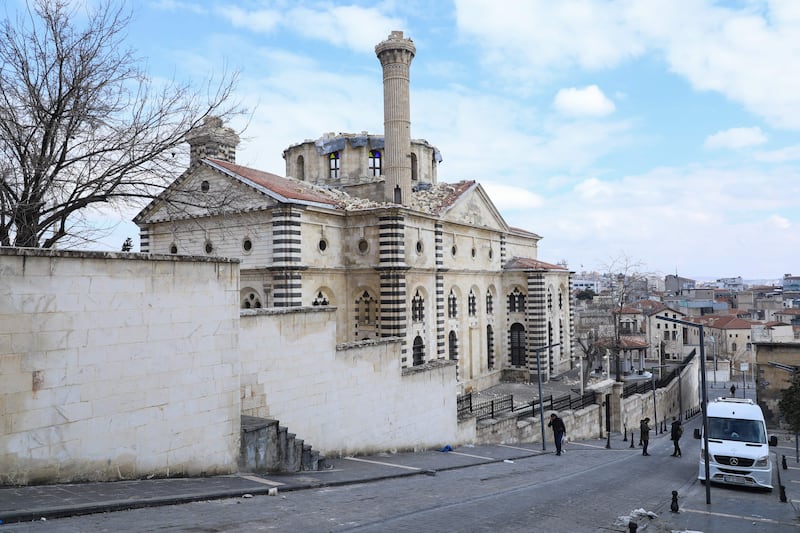Despite huge logistical difficulties, Unesco, the UN’s cultural body, has begun a preliminary assessment of damage inflicted on ancient and medieval sites by Monday’s devastating earthquakes in Syria and Turkey.
According to a Unesco spokesman, “We are gathering information, but at [this] stage preliminary observations did not report serious damage to World Heritage Sites, and more detailed examinations will be carried out in the forthcoming days. We are monitoring the situation in liaison with the authorities.”
A preliminary Unesco report stated: “The priority on the ground is first to save people. It will take several days or weeks before we have a precise view of the situation at each heritage and cultural site.” Once this is complete, Unesco will help local authorities to preserve and stabilise affected sites.
Former director of Syria’s antiquities department Maamoun Abdulkarim told The Irish Times it is difficult to secure information from people in the affected area. They “are looking after their dead, their victims, their wounded. They need many things in their daily lives because the economic situation is tragic in these areas, especially after 12 years of war and economic blockade, and now the earthquake.”
READ MORE
“Who is free today there to work on cultural heritage? We can’t ask them that,” he said.
Dr Abdulkarim has been informed that damage is “moderate” in Aleppo and in the ancient northwest city of Maarat al-Numan, where the museum and the Ottoman Khan (inn) were affected.

Earthquake-stricken Syrians asked for help. Why didn't the world answer?
The deadly earthquakes that hit Turkey and Syria in the early hours of Monday morning – along the border of those two countries – has mobilised governments and humanitarian agencies worldwide to respond.But all week, politics – not need – has dictated aid delivery, with life-saving help arriving in Turkey from around the world within hours, while it took until Thursday for the first UN aid convoy to reach northwestern Syria through Bab al-Hawa border crossing – the UN managed border crossing between the two countries. In northwest Syria it has mostly been left to local White Helmet volunteers to try to provide emergency assistance. In the News speaks to White Helmet volunteer Ismail Abdullah who has been rescuing survivors and collecting the dead from collapsed buildings all week; and to Natasha Hall, senior fellow in the Middle East programme at the Centre for Strategic and International Studies in Washington DC who explains why, in this already devastated region, delivering aid was never going to be simply about need, and what should happen next. Presenter: Bernice Harrison. Producer: Declan Conlon.
He said colleagues based near northern Syria’s “Dead Cities”, 700 abandoned Roman and Byzantine settlements, had told him there was no damage, but “we know that there is destruction in many [modern] villages and towns in that area”.
Unesco has initially reported “significant damage to the walls and towers of the 13th century Aleppo Citadel” as well as partial damage to the old city’s historic souqs and the collapse of the western tower of its wall. The facade of the national museum has cracked. Unesco is particularly concerned because Aleppo, one of the world’s oldest cities, has been a world heritage site since 1986 and has been listed as endangered by war since 2013.

The organisation reported collapses of the 12th century Norias, the great wooden water wheels in the northern city of Hama, which has seen relatively little destruction due to war. There has also been damage to the Crusaders’ citadel city in Tartous province.
In Turkey, Unesco “laments the collapse of several buildings” in the fortress city of Diyarbakir and the adjacent Hevsel Gardens, another world heritage site.
[ ‘No More Antakya’: City and a civilisation wiped out after earthquake, say TurksOpens in new window ]
[ Shock and rage at lack of state help as Turkey deals with earthquake aftermathOpens in new window ]
A second concern included the Neolithic site of Gobekli Tepe in Sanliurfa province, the location of 10,000-year-old megaliths, huge stones used to build prehistoric monuments. A third to be assessed is the summit of Mount Nemrut, one of the highest peaks in the Taurus mountains, where huge statues surround the remains of what is believed to be a first century BC royal tomb. A fourth is Arslantepe Mound, an ancient neo-Hittite archaeological site occupied from the 6th millennium BC to the medieval period. Other sites near the quake’s Turkish epicentre are also likely to have been affected.















